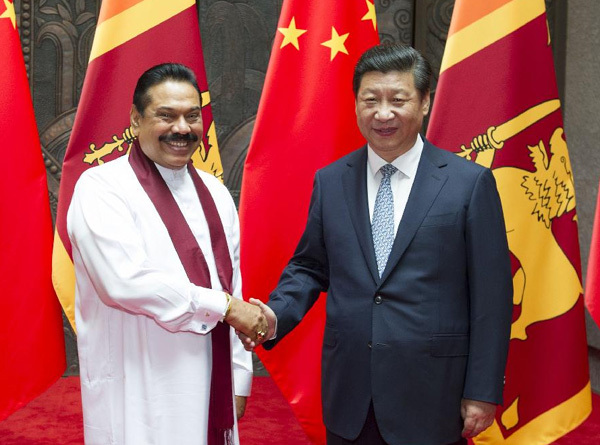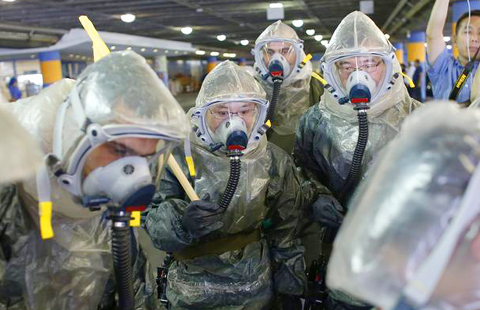Readers: Xi's South Asian tour to enhance good-neighborliness
Updated: 2014-09-17 14:47
( bbs.chinadaily.com.cn)
|
|||||||||||
Colin Speakman (UK)
Xi's visit makes more than simple geographical sense, for a Chinese leader to visit several countries in a region. It also makes diplomatic sense. The countries to be visited in South Asia are very different, but have in common the fact that they are not such close political allies of, for example, the USA as are the South East Asian countries of the Philippines and Vietnam. They are countries that are likely to see a good future in strengthened cooperation.
India has the world's second largest population and is the 10th largest economy by nominal GDP converted into US Dollars. Like China, India is a member of the G-20 group of leading economies and of the BRICS. Thus China and India have many opportunities to rub shoulders at international meetings as well as being neighbors. Recently the BRICS announced the creation of a Development Bank - it will be headquartered in Shanghai and its first president will be from India, Indeed, China and India have been seen as the two most important Asian countries of this century and authors write about : Chindia as a new force in world affairs. They have different political traditions and India traditionally sees large families as a cultural norm compared to China's one child policy. It is possible that India will overtake China as the largest population in the world, with 1.27 billion versus China approaching 1.4 billion. They both share a common interest in security and the defeat of terrorism.
 |
|
Chinese President Xi Jinping (R) meets with his Sri Lankan counterpart Mahinda Rajapaksa in Shanghai, east China, May 22, 2014. [Photo/Xinhua] |
The economic relations are paramount between large neighbors and it has been remarked that if China crosses a river by feeling the stones, India crosses a river by feeling China. This is a reference to the size of China's sovereign wealth funds and India's slowing economic growth at a time of badly needed infrastructure development. Hence China could supply both technical knowledge and finance for transport projects in India. President Xi will be keen to promote trade and get to know the new Indian leader, President Modi, sworn in on 26 May this year. Modi has recently visited Japan for diplomatic meetings so Xi's visit is timely.
Sri Lanka is not going to feature high up in any economic data about the global economy. It is a lower middle income developing country compared to China as upper middle income and the Middle Kingdom seeking to reach developed economy status in the next decade. Sri Lanka has a modest sized population of 20.5 million but it has doubled in the past 50 years, partly explaining low income per head. Sri Lanka is not, of course, a neighbor of China in terms of borders, as it is an island lying south of India. Yet one important connection is China's interest in opening up a maritime Silk Road in which this nation can play a useful part. More generally, China sees an opportunity is assisting the lower middle income countries, whether in South Asia or in Africa, with technological know how and financial assistance. This was the basis of China signing a Strategic Cooperative Partnership last year. It will be the first visit by a Chinese President to Sri Lanka and will be seen as a positive development by its own leader, President Rajapaksa after his visit to China in 2013.
Related Stories
India prepares for President Xi's visit 2014-09-17 11:38
President Xi starts central, south Asian tours 2014-09-11 13:54
President Xi attends SCO summit, visits four nations 2014-09-11 09:17
President Xi meets Indian PM's envoy 2014-09-10 08:37
Today's Top News
How Alibaba IPO learnt from Facebook's mistake
Russia to beef up troops in Crimea
10 problems of Chinese society
PBOC injects $81b into banks
iPhone 6 spawns Chinese satire
US general 'not rule out' larger ground role in Iraq
China's door to open wider, Li says
Shanghai FTZ official removed
Hot Topics
Lunar probe , China growth forecasts, Emission rules get tougher, China seen through 'colored lens', International board,
Editor's Picks

|

|

|

|

|

|





